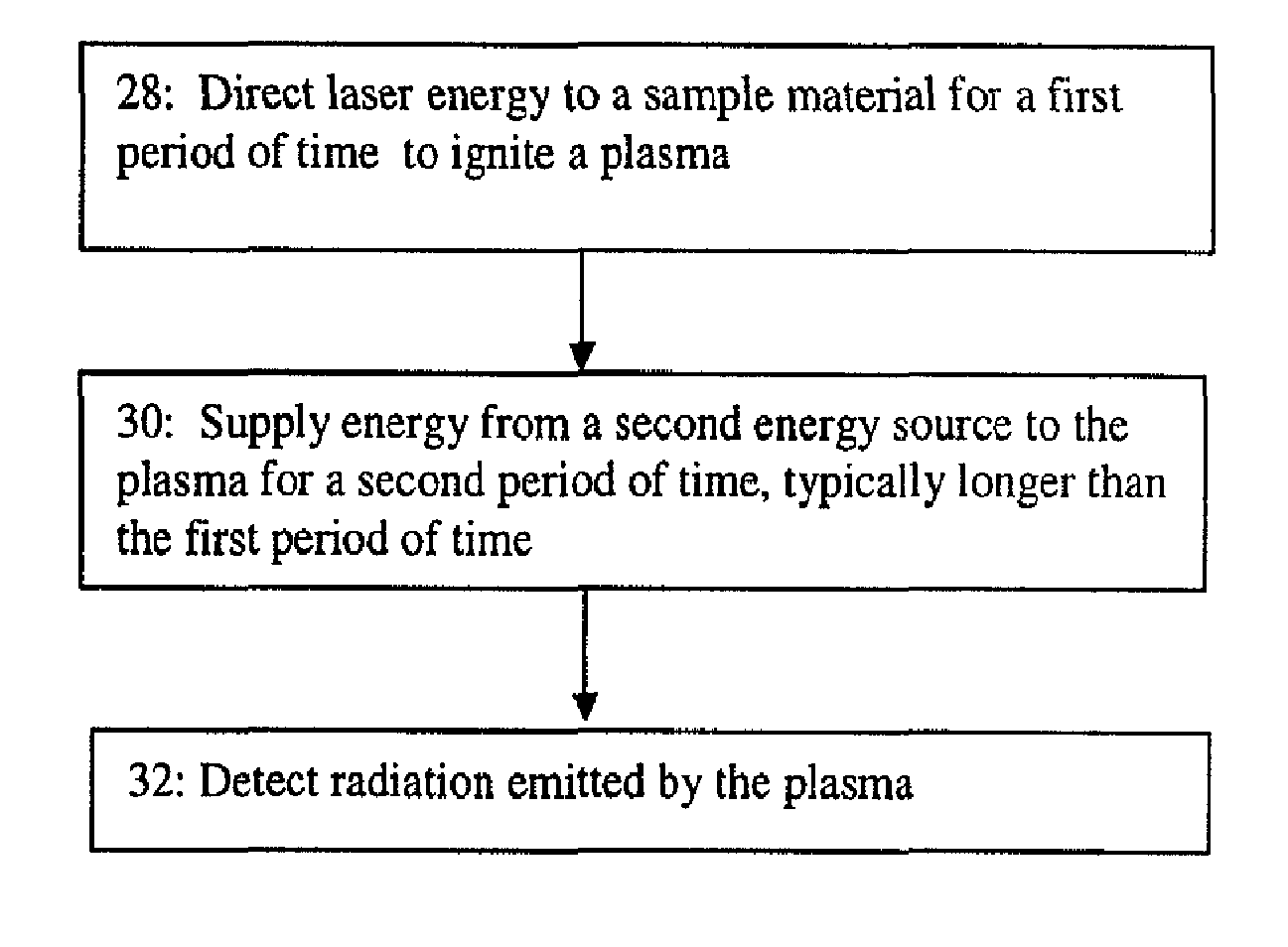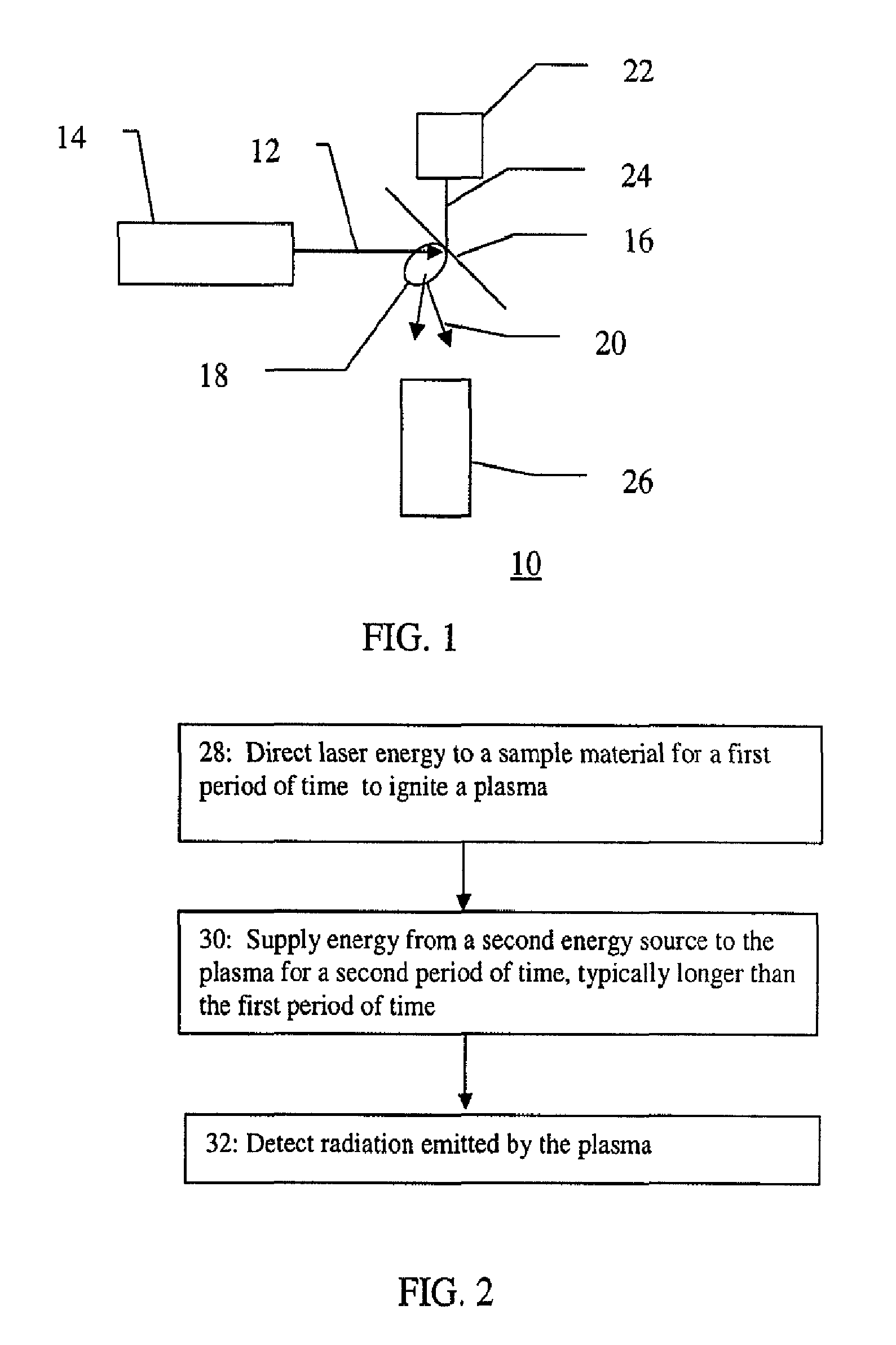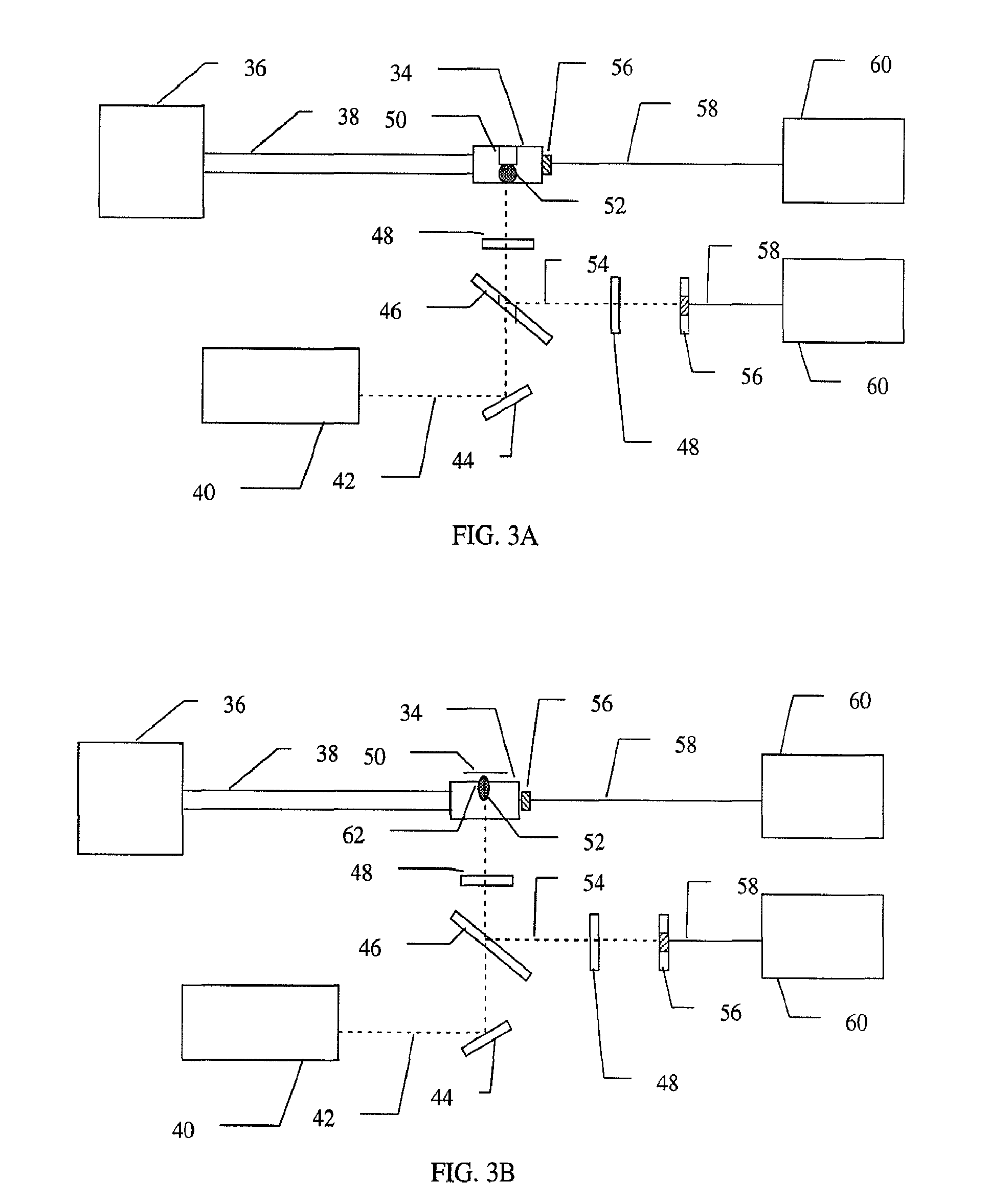Laser assisted microwave plasma spectroscopy
a plasma spectroscopy and microwave technology, applied in the direction of spectrometry/spectrophotometry/monochromators, instruments, optical radiation measurement, etc., can solve the problems of libs, which has serious limitations, and high-energy lasers that have to be used, and achieves the effect of improving detection sensitivity
- Summary
- Abstract
- Description
- Claims
- Application Information
AI Technical Summary
Benefits of technology
Problems solved by technology
Method used
Image
Examples
Embodiment Construction
[0028]The present invention relates to a system and method for the production of plasmas for spectroscopy. In particular, the present invention relates to the use of a combination of a laser and a second energy source to produce a plasma that emits characteristic radiation for a prolonged period of time. In this way, a method of spectroscopy that improves on the sensitivity of Laser Induced Breakdown Spectroscopy (LIBS) by a factor of 100 to 1000 may be produced.
[0029]In one embodiment of the present invention, termed Laser Assisted Microwave Plasma Spectroscopy (LAMPS), a laser is used to ablate, or vaporize, sample material and to ignite a plasma containing the sample material. Microwave energy is then supplied to the plasma to grow the plasma by the Townsend Effect and to sustain the plasma at a sufficiently high temperature that the plasma continues to emit radiation. By controlling the amount of microwave power and the pulse length of the microwaves, they may be preferentially ...
PUM
 Login to View More
Login to View More Abstract
Description
Claims
Application Information
 Login to View More
Login to View More - R&D
- Intellectual Property
- Life Sciences
- Materials
- Tech Scout
- Unparalleled Data Quality
- Higher Quality Content
- 60% Fewer Hallucinations
Browse by: Latest US Patents, China's latest patents, Technical Efficacy Thesaurus, Application Domain, Technology Topic, Popular Technical Reports.
© 2025 PatSnap. All rights reserved.Legal|Privacy policy|Modern Slavery Act Transparency Statement|Sitemap|About US| Contact US: help@patsnap.com



